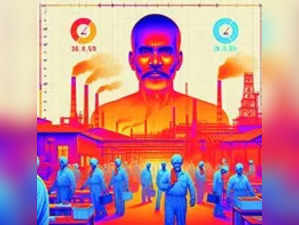
By one estimate, every degree rise in temperature above 27° C lowers labour productivity in factories by 2-4%. These effects are more pronounced in northern Indian plains than in the coastal peninsula. The impact on a workforce predominantly engaged in outdoor activity should be more severe.
Roughly, India loses around a quarter of its physical labour supply on very hot days. Added to effects of heatwaves on agricultural output, the impact spills over into inflation. Both income growth and price stability in India are at risk from global warming.
Even investment is affected by construction and logistics. Size of the informal economy contributes to the problem of keeping the workforce cool enough to be productive. Besides, mitigation through cooling solutions is a partial exercise because it doesn't apply to well over half the country's workers. The other option, changing seasonal migration, could make some parts of the country more productive than others.
While solutions such as cooling and evacuation come with negative externalities, they are necessary steps in addressing the impact of heatwaves. Geographically, the country's population is concentrated in the expanding northern 'heat belt'.
Disguised unemployment in agriculture restricts labour mobility, except to urban areas, which, in turn, have a higher carbon footprint. An accelerated switch to RE could cut through most of the issues that contribute to heatwaves pulling down India's labour supply. It's crucial that adaptive strategies emerge before the loss of potential economic output becomes non-linear to rising temperatures.
(Catch all the Business News, Breaking News, Budget 2024 Events and Latest News Updates on The Economic Times.)
Subscribe to The Economic Times Prime and read the ET ePaper online.
Read More News on
(Catch all the Business News, Breaking News, Budget 2024 Events and Latest News Updates on The Economic Times.)
Subscribe to The Economic Times Prime and read the ET ePaper online.









 Get Unlimited Access to The Economic Times
Get Unlimited Access to The Economic Times
